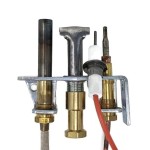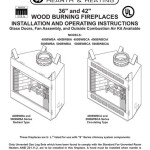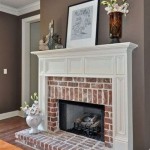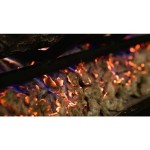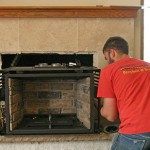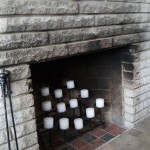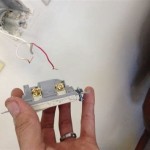Gas Fireplace Burner Replacement: A Comprehensive Guide
A gas fireplace offers a convenient and aesthetically pleasing alternative to traditional wood-burning fireplaces. However, like any mechanical device, the burner within a gas fireplace can degrade over time, requiring replacement. This article provides a comprehensive guide to understanding the need for burner replacement, the different types of burners, the replacement process, and important safety considerations.
The burner is a critical component of a gas fireplace, responsible for distributing the natural gas or propane evenly to create a consistent and visually appealing flame. Over time, factors such as corrosion, soot buildup, and physical damage can compromise the burner's functionality and efficiency, necessitating its replacement.
Several indicators may suggest that a gas fireplace burner needs replacement. These can include uneven or flickering flames, a yellow or orange flame (indicating incomplete combustion), a gas odor even when the fireplace is off, difficulty igniting the fireplace, or visible signs of rust or deterioration on the burner itself. Ignoring these signs can lead to reduced heating efficiency, increased carbon monoxide production, and potential safety hazards.
Before undertaking any replacement work, it's crucial to understand the different types of gas fireplace burners available. Selecting the correct replacement burner is essential for optimal performance and safety. It is also worthwhile to engage professional if you are unsure of the replacement procedure.
Understanding Different Types of Gas Fireplace Burners
Gas fireplace burners come in various designs, each offering unique flame patterns and heating characteristics. The most common types include:
Pipe Burners: These are the simplest type, consisting of a perforated pipe that distributes gas along its length. They are typically found in older or less expensive gas fireplaces. They offer a basic flame pattern and are relatively inexpensive to replace.
Ribbon Burners: Ribbon burners feature a series of narrow ribbons arranged in a specific pattern. These ribbons create a more visually appealing and dynamic flame compared to pipe burners. They are often found in mid-range gas fireplaces.
Ceramic Burners: Ceramic burners utilize a porous ceramic material that is heated by the gas flame. This results in a radiant heat output, making them a more efficient heating option. They are commonly found in high-end gas fireplaces.
Log Burners: These burners are designed to mimic the appearance of a wood-burning fire by incorporating ceramic or refractory logs that are heated by the gas flame. The burner itself is often concealed beneath the logs, creating a more realistic and aesthetically pleasing fire.
Multi-Sided Burners: Typically found in gas fireplaces designed to be viewed from multiple angles, these burners are designed to provide consistent flames and heating characteristics where viewing is 180 degrees or more. Many designs have the burner wrapped in a circular or square pattern. These burners are more complex and, if broken, would better suit engagement with a professional.
Identifying the existing burner type is the first step in selecting a replacement. The new burner must be compatible with the fireplace's gas type (natural gas or propane) and the fireplace's BTU (British Thermal Unit) rating. The BTU rating indicates the amount of heat the fireplace is designed to produce per hour. Using an incompatible burner can lead to inefficient operation, safety hazards, and potential damage to the fireplace.
It's also important to consider the physical dimensions of the burner. The replacement burner must fit properly within the firebox and align with the existing gas supply line and igniter. Purchasing a burner that is too large or too small can result in installation difficulties and compromised performance.
Steps Involved in Replacing a Gas Fireplace Burner
Replacing a gas fireplace burner is a task that requires careful attention to detail and adherence to safety protocols. The following steps outline the general procedure, but it is important to consult the fireplace manufacturer's instructions for specific guidance.
Safety First: Before starting any work, ensure the gas supply to the fireplace is completely shut off. Locate the gas shut-off valve, typically located near the fireplace or gas supply line, and turn it to the "off" position. Disconnect the electrical supply to the fireplace by switching off the corresponding breaker in the electrical panel. Allow the fireplace to cool completely before proceeding.
Access the Burner: Remove the glass front or any other access panels to expose the burner assembly. This may involve unscrewing or unclipping the panels. Refer to the fireplace manufacturer's instructions for specific guidance on accessing the burner.
Disconnect the Gas Line: Carefully disconnect the gas supply line from the burner. Use a wrench to loosen the gas line fitting. Be prepared for a small amount of residual gas to escape. Ensure the area is well-ventilated. It's recommended to use thread sealant on the fitting when reassembling to prevent leaks.
Disconnect the Igniter and Other Connections: Disconnect any electrical connections to the burner, such as the igniter wire or flame sensor wire. These connections are usually secured with clips or screws. Take pictures of the connections before disconnecting them to ensure proper reassembly.
Remove the Old Burner: Remove the old burner from the firebox. This may involve unscrewing or unclipping the burner from its mounting brackets. Note the orientation of the burner before removing it to ensure proper installation of the new burner.
Install the New Burner: Install the new burner in the firebox, aligning it with the mounting brackets and securing it with screws or clips. Ensure the burner is properly seated and level.
Reconnect the Gas Line: Reconnect the gas supply line to the burner, using thread sealant to ensure a tight seal. Tighten the fitting with a wrench, being careful not to overtighten and damage the fitting. Double-check that the gas line is properly aligned and not kinked.
Reconnect the Igniter and Other Connections: Reconnect the electrical connections to the burner, ensuring that the wires are properly connected and secured. Refer to the pictures taken during disassembly to ensure proper reassembly. Do not overtighten any screws.
Test for Gas Leaks: After reconnecting the gas line, test for gas leaks using a soap and water solution. Apply the solution to the gas line fittings and connections. If bubbles appear, there is a gas leak. Tighten the fittings or reapply thread sealant and retest until there are no leaks. If leaks cannot be resolved, contact a qualified gas technician.
Reassemble the Fireplace: Replace the glass front or access panels, securing them with screws or clips. Ensure all components are properly aligned and secured.
Test the Fireplace: Turn the gas supply back on and switch on the electrical breaker. Attempt to ignite the fireplace. Observe the flame pattern and ensure it is consistent and even. If there are any issues with the flame, such as unevenness or flickering, consult the fireplace manufacturer's instructions or contact a qualified gas technician.
Essential Safety Considerations for Burner Replacement
Gas fireplace burner replacement involves working with gas and electricity, which can pose potential safety hazards. Adhering to safety protocols is crucial to prevent accidents and ensure the safe operation of the fireplace.
Carbon Monoxide Awareness: Carbon monoxide (CO) is a colorless, odorless, and poisonous gas produced by incomplete combustion. Ensure that the home has working CO detectors installed and regularly tested. If there is a suspicion of a gas leak or CO poisoning, immediately evacuate the home and contact the local fire department or gas utility company.
Gas Leak Detection: Always test for gas leaks after reconnecting the gas line. A gas leak can lead to a fire or explosion. If a gas leak is detected, immediately shut off the gas supply and contact a qualified gas technician.
Professional Assistance: If uncomfortable performing the burner replacement oneself or unfamiliar with gas appliance repair, it is best to contact a qualified gas technician. A qualified technician has the necessary training, experience, and tools to safely and effectively replace the burner.
Manufacturer's Instructions: Always consult the fireplace manufacturer's instructions for specific guidance on burner replacement. The instructions will provide detailed information on the specific steps involved, as well as any safety precautions that need to be taken.
Proper Ventilation: Ensure that the area is well-ventilated during the replacement process. This will help to prevent the buildup of gas fumes and reduce the risk of explosion or fire.
Use the Right Tools: Use the proper tools for the job. Using the wrong tools can damage the gas line or other components of the fireplace, leading to leaks or other safety hazards.
Inspect Other Components: While replacing the burner, it is also a good opportunity to inspect other components of the fireplace, such as the gas line, igniter, and flame sensor. Replace any worn or damaged components to ensure the safe and efficient operation of the fireplace.
Replacing a gas fireplace burner is a task that can improve the performance and safety of a gas fireplace. By understanding the different types of burners, following the proper replacement procedures, and adhering to safety protocols, one can ensure a successful and long-lasting repair. Remembering, if there are doubts or discomfort, engaging a professional is the safest approach.

All About Gas Burners For Fireplaces Types Features

Trapezoid Gas Fireplace Burner Pan Magic Touch Mechanical

Parts Of A Gas Fireplace Explained With Real Examples

Trapezoid Gas Fireplace Burner Pan Magic Touch Mechanical

Parts Of A Gas Fireplace Explained With Real Examples

Gas Fireplace Natural Bdm35 The Cozy Cabin Lennox Hearth Parts

Diamond Burner By Fire Glass

Step By Install Instructions For Living Flame Burners

G400 Series G450 G490 Natural Vent Gas Fireplace 114 117 The Cozy Cabin Stove Parts

Gas Fireplace Vermontcastings Parts For Vermont Castings Majestic

